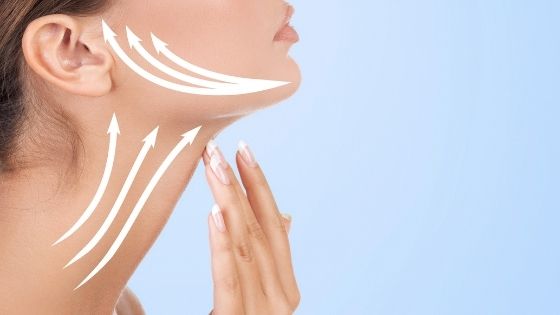If you’ve started to notice aging signs on your face, such as loose skin or crow’s feet, jowls, and wrinkles, you may be considering a facelift. However, you may be having reservations.


We can help you determine whether this operation is appropriate for you. Read on!
At what age should you consider getting a facelift?
There is no optimal age for a facelift or rhytidectomy. Any healthy person with aging symptoms on their face and neck can benefit from the surgery.
However, persons in their mid-40s, 50s, and 60s see the best results. Yet, paying attention to indicators instead of your age is a better way to assess if you require a rhytidectomy.
Facial Aging Signs
There are three major symptoms of face aging that might help you decide whether or not a rhytidectomy is correct for you. These symptoms typically occur at 30 years; but this highly depends on genetics, habits, and health. If you’re genetically inclined to faster aging, you smoke or spend too much time in the sun you may age faster than others.
Wrinkles and fine lines
Wrinkles and fine lines are often the most prominent of the three basic signs of facial aging, and they become deeper and more apparent with age. As we age, our body’s natural anti-wrinkle chemicals degrade. These include elastin, hyaluronic acid, and collagen, which decline at a 1% annual rate after 25.
These lines and wrinkles usually form around the eyes, forehead, and nasolabial folds around the lips and nose.
Skin Sagging
Most people will begin to notice some skin drooping in their faces by 40. They’re characterized by drooping in your neck, cheeks, and nasolabial folds, making one feel unhappy or tired, especially if their eyes are hollow.
Sagging is also caused by the loss of collagen, elastin, and hyaluronic acid, which provide volume beneath the skin making it fuller and smoother. Elastin is largely responsible for your skin’s strength and elasticity, and as you age, it drops dramatically, making your skin more brittle or thinner.
Decrease Elasticity
When we are young, our skin has lots of collagen and elastin to maintain it smooth and firm. However, as we age, these compounds decrease, disrupting our skin’s structure.
And so, our skin loses strength, and wrinkles that were formerly fine lines become deeper. The decrease in hyaluronic acid causes drying out and loss of firmness almost immediately.
Deep lines or wrinkles and loss of skin firmness are, for the most part, unavoidable aspects of the aging process. We can’t change the intrinsic causes but we can only reduce the extrinsic effects to a significant extent. With the right combination of skincare products and nonsurgical and surgical treatments, your skin’s appearance can look younger.
Face Lifts Types
Full List
The full lift is the most common type of facelift. A full lift removes extra skin from the cheeks and neck. It also repairs jawline definition and reduces facial fat. A complete rhytidectomy results in smooth, firm, and fresh-looking skin for up to a decade.
A full lift incision starts in the temple region, above and behind the ear, and continues around the earlobe. The surgeon pulls the connective tissue and muscles just below the skin to raise and reposition it. They follow it with sutures or metal clips to close the incision.
Small Lift
The small lift is commonly recommended for younger patients to treat slight drooping of the neck and lower face. It is also helpful for those who are prone to scarring. It is still a surgical treatment that needs anesthesia and recovery time, though it is usually shorter than a full lift.
Mini-lifts are performed similarly to full-lifts. Surgeons tighten your upper connective tissue and facial muscles as they raise the skin. With a micro lift, the incision is smaller, thus fewer sutures or clips are needed to close it.
Complement with other methods
Neither method of rhytidectomy addresses crow’s feet or eyelid droop. Thus, many individuals who get a lift also get brow lifts or eyelid surgery.
Results
No operation can reverse the aging process. Provided you take good care of your skin and avoid exposure to the sun, your facelift results can last up to ten years.
The Ideal Candidate
Mental Wellness
Having a rhytidectomy is a profoundly personal decision. You should psychologically prepare for the changes in your look that will occur following the surgery, as well as the reality that the indicators of aging will reappear after a few years. Considering its major, it’s best to have reasonable expectations.
This surgery will not make you seem 18, but it will make you appear more youthful. It is not intended to alter your appearance or alter your facial structure in any way. So you’ll still look like you, but with better skin. People may not detect the “work,” but they will remark how much healthier and younger your face looks. If you’d like to learn more about what to expect click here for more information.
Good Physical Health
The better your overall health, the faster you’ll heal. A healthy body also generates greater results since your immune system can focus on repairing your wounds rather than other health issues. Discuss any medical issues with your surgeon before surgery to ensure a lift is good for you.
Smokers are less likely to heal faster than non-smokers, hence non-smokers are strong prospects for lifts. Also, if you continue smoking following the surgery, your effects will not be as long-lasting as if you quit. To prepare for surgery and rehabilitation, most surgeons recommend quitting smoking a month before the procedure.
You may not be a suitable candidate for a lift if you are fat, have diabetes, hypertension, a bleeding disorder, heart illness, or depression, or if you use an excessive amount of alcohol. All surgeries have risks, and anyone with these diseases or related health issues should avoid elective cosmetic surgery.
Good Skin Care
Although this surgery is meant to improve your skin’s condition, it must still have some elasticity before being performed. Pinch your skin and check if it “bounces” back. If it does, your skin is almost certainly healthy enough for this operation. If you smoke or have substantial sun damage on your face, you may not obtain the desired result.
Bone Structure
A lift won’t fix a crooked chin or a crooked nose. After a lift, your bone structure stays unchanged. So, before a lift, consider a rhinoplasty or genioplasty.
















